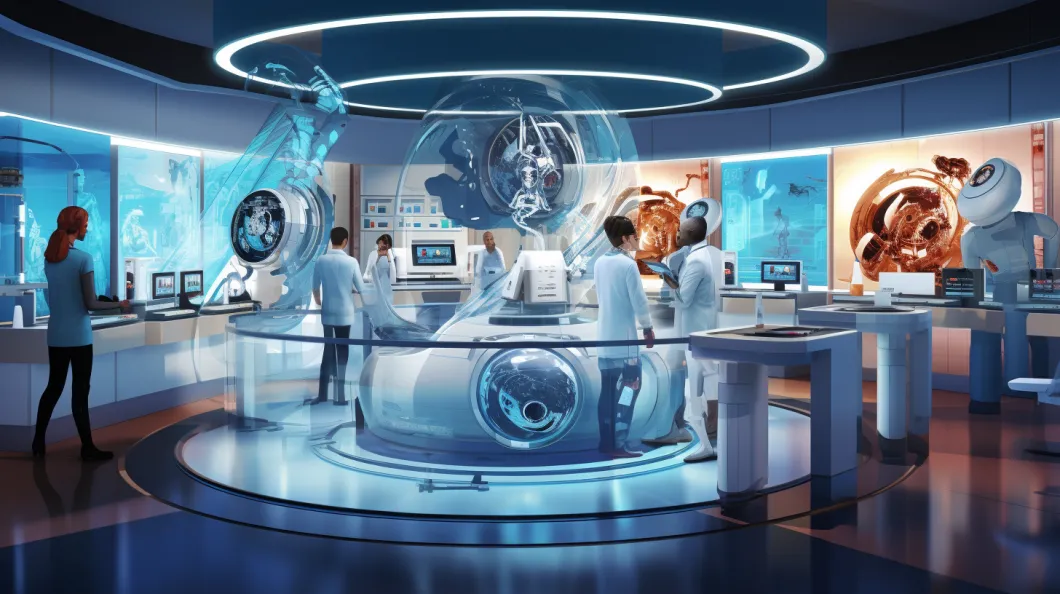Table of Contents
Rahul N. Khurana, in his article on the American Academy of Ophthalmology (AAO) website, emphasized that the future of ophthalmology in artificial intelligence (AI) is not just a concept from science fiction movies. It is a technology that is very much present in our lives today. Khurana highlighted two significant ways in which AI is revolutionizing the future of ophthalmology.
Firstly, it enhances the screening process and improves access to care by automatically analyzing fundus images for conditions like diabetic retinopathy and glaucoma.
Secondly, AI is augmenting the future of ophthalmologists by helping them manage the overwhelming amount of information and data they encounter. With AI as its backbone, the future of ophthalmology can provide optimal care to its patients.
Advancements and Insights from Recent Conferences
It’s no surprise that AI in the future of ophthalmology, as well as in healthcare in general, has been a hot topic at conferences for quite some time now. However, what’s truly intriguing is the persistent question that lingers in everyone’s mind: “What lies ahead for AI in the future of ophthalmology?” Yet, considering the remarkable progress made in the past five years alone, following Khurana’s prediction, perhaps it’s time we shift our focus and start asking ourselves, “How can we effectively utilize AI in the present?”

Josef Huemer, a Consultant Ophthalmologist for Medical Retina at Moorfields Eye Hospital NHS Foundation Trust in London, raised an intriguing question at the recent European Society of Cataract and Refractive Surgeons (ESCRS) meeting in Vienna, Austria (September 8–12, 2023). He pondered over the transformative impact of deep learning on image analysis and speech recognition in the past decade, emphasizing that we have now embarked upon the era of generative AI.
Huemer reveals that each OCT scan yields a staggering 65 million data points. Not only do we possess extensive datasets of fundus images for diseases like diabetic retinopathy (DR), but there have also been over 3000 publications dedicated to AI in ophthalmology since 2000. The remarkable technology has even led to FDA-approved applications for retinal diseases, including diabetic retinopathy (DR).
Challenges and Ethical Considerations in AI Implementation
Furthermore, it has displayed promising outcomes in various areas such as intraocular lens positioning, confocal microscopy, cataract grading, capsular bag diameter prediction, and the diagnosis of keratoconus. In an exciting development, a highly acclaimed article on the first foundation model of the future of ophthalmology was recently published by a group of researchers, including Pearse Keane from Moorfields Eye Hospital and UCL Institute of Ophthalmology.
Additionally, significant strides have been made in identifying signs of Parkinson’s disease through OCT scans, potentially paving the way for new applications in the future.
Huemer informs The future of ophthalmology that we have successfully developed the proof of concept. Now comes the intriguing challenge – how can we optimize the utilization of our data sets? Ensuring their representativeness is crucial. Moreover, we need to explore how we can apply the knowledge gained from diseases like DR and others while maintaining clinical safety.

A matter of great concern is the potential for bias in AI and how it can exacerbate this bias when dealing with diverse populations. According to Huemer, this is an area where our knowledge is still lacking. The fact that AI can exhibit “racist” behavior or identify race without being explicitly trained to do so is truly alarming.
To address this problem, it is crucial to establish a regulatory framework and adopt a mindset that allows us to tackle this issue head-on. Huemer highlights the commendable efforts of Alastair Denniston, a Consultant Ophthalmologist and Professor at the Institute of Inflammation and Ageing at the University of Birmingham.
AI Implementation, Biases, and the Future of Ophthalmology in Healthcare
Denniston’s work within the international STANDING Together collaboration aims to establish best-practice standards for healthcare datasets used in AI for the future of ophthalmology. The goal is to ensure these datasets are diverse, and inclusive, and do not marginalize or exclude underrepresented groups.
Huemer emphasizes the importance of subjecting deep-learning systems to rigorous validation processes in diverse cohorts to prevent biases. The UK DR screening program, which encompasses a multi-ethnic population, stands as a promising example in this regard. It offers an opportunity to assess whether AI performs equally well for all individuals and meets our desired objectives. Huemer believes that there are signs indicating the potential democratization of effective DR screening worldwide.
Huemer’s perspective on the question of whether AI will replace doctors is quite interesting. While he acknowledges that there are certain areas where AI can be beneficial, such as triaging patients or handling routine tasks, he believes that there are other fields, like the future of ophthalmology, where AI will not be as useful. Specifically, he mentions uveitis as an example, highlighting the importance of a doctor’s clinical expertise in such cases.
However, Huemer encourages us to view AI not as a threat, but as an opportunity. He reminds us that doctors were initially skeptical of the thermometer’s introduction, yet it did not replace them. Similarly, the use of OCTs has not replaced retina specialists. So, instead of fearing AI, we should embrace it as a tool that can enhance the medical field.